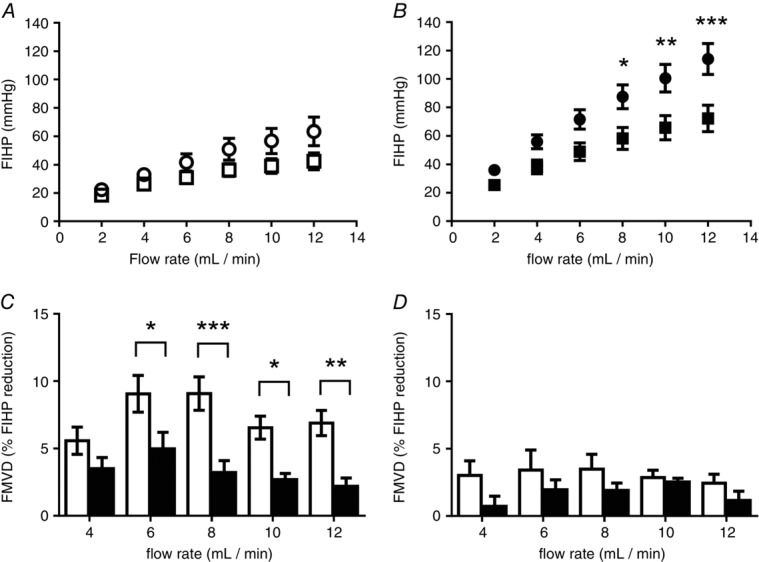Figure 4.

Contribution of nitric oxide (NO) to fetoplacental resistance and flow-mediated vasodilatation (FMVD)
Ex vivo dual perfusion of human placental lobules was performed following the inhibition of nitric oxide synthase. Vascular resistance was measured in normal placentas (n = 10; open symbols; A) or fetal growth restricted (FGR) placentas (n = 10; filled symbols; B) at increasing flow rates in the presence (circles) or absence (squares) of l-NNA (100 μm). FMVD, taken as the percentage decrease in fetal-inflow hydrostatic pressure (FIHP) from the initial peak to the new steady state following an elevation in flow, was measured in placentas from control (n = 10; C) and FGR pregnancies (n = 10; D) in the presence (filled bars) and absence (open bars) of l-NNA (100 μm). l-NNA had a significant effect on FIHP in normal and FGR perfused placental lobules (P < 0.001 and P < 0.0001, respectively). The flow-mediated vasodilatory effect was significantly reduced by l-NNA in normal and FGR perfused lobules (P < 0.0001 and P < 0.05, respectively). All data are presented as means ± SEM (ANOVA with Bonferroni post hoc test: *P < 0.05, **P < 0.01, ***P < 0.001).
